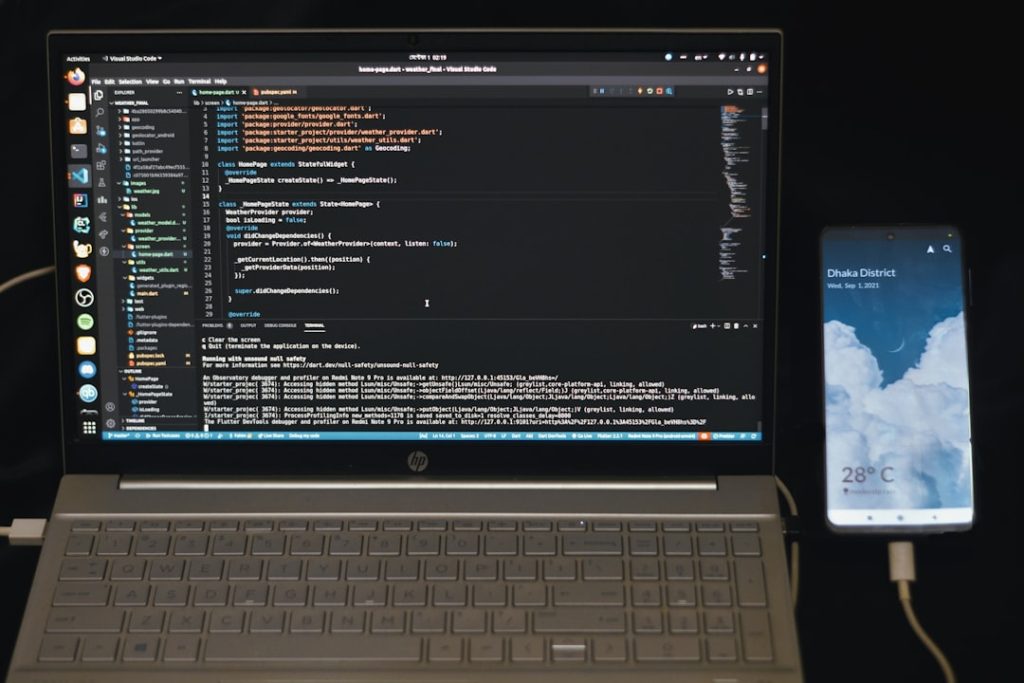When you think about your career, it’s essential to grasp the fundamental differences between a side hustle and a full-time job. A full-time job typically involves a structured work environment, where you commit a significant portion of your week—often 40 hours or more—to a single employer.
You are expected to adhere to a set schedule, and your responsibilities are clearly defined. The stability and predictability of a full-time job can provide a sense of security, allowing you to plan your life with more certainty. On the other hand, a side hustle is often characterized by its flexibility and entrepreneurial spirit.
It allows you to pursue your passions or interests outside of your primary job, often on your own terms. Whether it’s freelancing, starting an online store, or offering consulting services, a side hustle can be a way to generate additional income while exploring your creativity. Unlike a full-time job, the hours you dedicate to your side hustle can vary greatly, depending on your availability and motivation.
This distinction is crucial as it shapes not only how you allocate your time but also how you approach your financial goals and personal aspirations.
Key Takeaways
- Side hustles are typically part-time ventures pursued alongside a full-time job, while a full-time job is a commitment to working for an employer for a set number of hours each week.
- Pros of having a side hustle include additional income, flexibility, and the opportunity to pursue a passion, while cons may include time constraints and potential burnout.
- Pros of having a full-time job include stability, benefits, and career advancement opportunities, while cons may include limited flexibility and potential for feeling stuck in a routine.
- Financial considerations for a side hustle vs full-time job include potential for higher earnings with a successful side hustle, but also the stability and benefits that come with a full-time job.
- Time management and work-life balance may be more challenging with a side hustle, as it requires balancing multiple commitments, while a full-time job may offer more predictable hours and routine.
- Pursuing a side hustle may offer opportunities for entrepreneurial growth and skill development, while a full-time job may provide a more structured path for career advancement within a company.
- Personal fulfillment and satisfaction may come from pursuing a passion through a side hustle, while a full-time job may offer a sense of security and stability.
- Making the right choice between a side hustle and a full-time job depends on individual preferences, financial needs, career goals, and work-life balance priorities.
Pros and Cons of Having a Side Hustle
Engaging in a side hustle can be incredibly rewarding, offering numerous advantages that appeal to many individuals. One of the most significant benefits is the potential for additional income.
Moreover, a side hustle allows you to explore your passions and interests that may not be fulfilled in your full-time job. This creative outlet can lead to personal growth and satisfaction, as you develop new skills and expand your professional network. However, there are also challenges associated with maintaining a side hustle.
Balancing multiple commitments can lead to burnout if not managed properly. You may find yourself stretched thin, juggling responsibilities between your full-time job and your side project. Additionally, the income from a side hustle can be unpredictable, making it difficult to rely on it as a stable source of revenue.
This uncertainty can create stress, especially if you are trying to meet financial obligations or save for future goals.
Pros and Cons of Having a Full-Time Job
A full-time job offers its own set of advantages that many people find appealing. One of the most significant benefits is job security. With a steady paycheck and benefits like health insurance and retirement plans, you can enjoy peace of mind knowing that your financial needs are being met.
Furthermore, full-time positions often provide opportunities for career advancement within an established company. You can build relationships with colleagues and mentors who can help guide your professional development. However, full-time jobs also come with their drawbacks.
The structured nature of these positions can sometimes feel restrictive, limiting your ability to explore other interests or passions outside of work. You may find yourself stuck in a routine that doesn’t inspire you or align with your long-term goals. Additionally, the demands of a full-time job can lead to stress and burnout, particularly if you are in a high-pressure environment or working long hours without adequate support.
Financial Considerations: Side Hustle vs Full-Time Job
| Metrics | Side Hustle | Full-Time Job |
|---|---|---|
| Income | Variable | Stable |
| Benefits | Limited or None | Healthcare, Retirement |
| Time Commitment | Part-Time | Full-Time |
| Financial Risk | Higher | Lower |
When evaluating the financial implications of a side hustle versus a full-time job, it’s essential to consider both immediate and long-term factors. A full-time job typically provides a consistent income that allows for better budgeting and financial planning. With regular paychecks, you can manage your expenses more effectively and contribute to savings or retirement accounts with confidence.
The benefits associated with full-time employment also add significant value, as they can reduce out-of-pocket expenses for healthcare and other necessities. In contrast, while a side hustle can offer additional income, it often comes with variability that can complicate financial planning. The income generated from a side project may fluctuate based on demand or seasonal trends, making it challenging to rely on it for essential expenses.
However, if you successfully grow your side hustle into a substantial source of income, it could eventually surpass your full-time salary. This potential for growth is one of the most appealing aspects of pursuing a side hustle; it allows you to take control of your financial future in ways that traditional employment may not.
Time Management and Work-Life Balance: Side Hustle vs Full-Time Job
Time management is a critical factor when comparing the demands of a side hustle versus those of a full-time job. In a full-time position, your schedule is typically set by your employer, which can make it easier to plan your personal life around work commitments. However, this structure can also lead to challenges in achieving work-life balance, especially if your job requires overtime or has unpredictable demands.
On the other hand, a side hustle offers greater flexibility in how you allocate your time. You have the freedom to choose when and how much you work on your side project, which can be particularly appealing if you have other commitments such as family or education. However, this flexibility comes with its own set of challenges; without careful planning and discipline, it’s easy for the lines between work and personal life to blur.
You may find yourself working late into the night or sacrificing personal time to meet deadlines or pursue new opportunities.
Career Growth and Opportunities: Side Hustle vs Full-Time Job
When considering career growth and opportunities, both side hustles and full-time jobs offer unique pathways for advancement. In a full-time role, you often have access to structured training programs, mentorship opportunities, and clear pathways for promotion within the organization. This environment can foster professional development and help you build valuable skills that enhance your resume.
Conversely, pursuing a side hustle allows you to take charge of your career trajectory in an entirely different way. You have the opportunity to explore various interests and industries without being confined to one employer’s vision or limitations. This entrepreneurial experience can lead to valuable skills such as marketing, sales, and project management that may not be developed in traditional employment settings.
Additionally, if your side hustle becomes successful enough, it could even evolve into a full-time venture, providing an exciting alternative career path.
Personal Fulfillment and Satisfaction: Side Hustle vs Full-Time Job
Personal fulfillment is an essential aspect of any career choice, influencing not only your happiness but also your overall well-being. Many individuals find that their full-time jobs provide stability but may lack the passion or excitement they desire in their professional lives. This disconnect can lead to feelings of dissatisfaction or even burnout over time.
In contrast, engaging in a side hustle often brings a sense of joy and accomplishment that may be missing from traditional employment. When you pursue something you are passionate about—whether it’s crafting handmade goods or offering consulting services—you may find greater satisfaction in your work. This fulfillment can spill over into other areas of your life, enhancing your overall happiness and motivation.
Making the Right Choice for You: Side Hustle vs Full-Time Job
Ultimately, deciding between a side hustle and a full-time job is a deeply personal choice that depends on various factors unique to your situation. Consider what aspects of work are most important to you—financial stability, personal fulfillment, career growth—and weigh them against each option’s pros and cons. Reflect on your current lifestyle and commitments; if you have the bandwidth to take on additional work without sacrificing your well-being or relationships, a side hustle might be worth exploring.
Conversely, if you value stability and predictability in your career path or have significant financial obligations that require consistent income, sticking with a full-time job may be the better choice for now. Remember that there is no one-size-fits-all answer; many people successfully navigate both worlds by maintaining their full-time jobs while pursuing side hustles that ignite their passions. Ultimately, the right choice for you will align with your values, goals, and circumstances—allowing you to create a fulfilling career path that resonates with who you are.
FAQs
What is a side hustle?
A side hustle is a secondary job or business that individuals pursue in addition to their full-time job. It is typically done to earn extra income or pursue a passion.
What is a full-time job?
A full-time job is a primary employment commitment that typically requires 40 hours of work per week. It often provides benefits such as health insurance, retirement plans, and paid time off.
What are the differences between a side hustle and a full-time job?
The main differences between a side hustle and a full-time job include the level of commitment, stability, benefits, and income potential. A side hustle is typically more flexible and offers the opportunity to pursue personal interests, while a full-time job provides stability and benefits.
What are the benefits of a side hustle?
Some benefits of a side hustle include the potential to earn extra income, pursue a passion, gain new skills, and diversify one’s sources of income. It can also provide a sense of independence and creativity.
What are the benefits of a full-time job?
Benefits of a full-time job include stability, a consistent income, access to benefits such as health insurance and retirement plans, and opportunities for career advancement and professional development.
Can a side hustle become a full-time job?
Yes, a successful side hustle has the potential to grow into a full-time job. Many entrepreneurs and business owners start with a side hustle and eventually transition to working on their venture full-time.
What should I consider when deciding between a side hustle and a full-time job?
When deciding between a side hustle and a full-time job, consider factors such as your financial needs, career goals, work-life balance, risk tolerance, and personal interests. It’s important to weigh the pros and cons of each option before making a decision.

